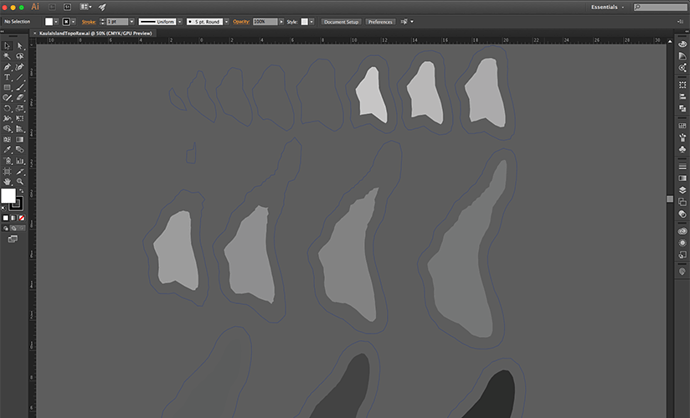The bathymetric map that’s floating around the office is so awesome, I decided to play with some similar techniques. I did some brainstorming with friends and decided it would be cool to have a topographic style model of a volcano as the cord cover (or ’ceiling medallion’) of a chandelier, so we decided to do a small model of Kaula Island as a test run.
A friend of mine works at an architectural firm and used Vectorworks to create the topo lines for the island, and sent it to me in a PDF (he chose Kaula Island, I’m not sure what significance it has).
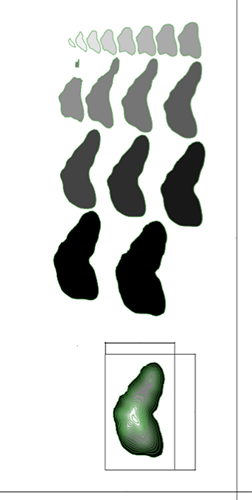
I opened the PDF in Adobe Illustrator, deleted all the weird extra stuff that Vectorworks created, and isolated the paths for each topographic layer. I wanted to nest the pieces where possible to save material, so I duplicated all the paths into another layer using Paste in place. Then I used Effect > Path > Offset Path… to create a -0.5 inch offset around each path. I used Object > Expand Appearance to get the inside path, and colored all the interior paths in a different color (mostly for my organizational sanity - I cut both paths with the same laser settings). For the smallest, highest pieces I decided to skip the hollow middle step. After grouping the paths with their interiors, I rearranged the file until I’d nested as many pieces as I could.
Finally, I found some ¼” plywood in the back and got to cutting! I copied each nested group to another Illustrator file and exported it to the Glowforge.
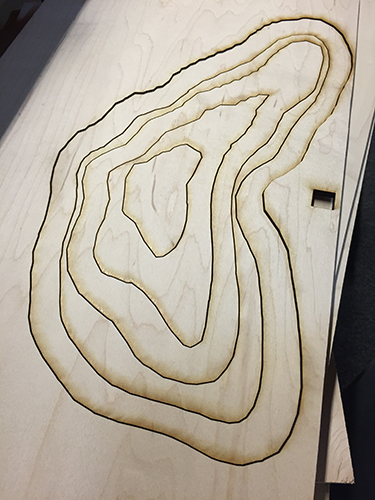
This shows an example of one of the cuts. This might be the very bottom layer, then 3 layers up, then 4 layers above that, depending on how the nesting worked out. Once I was finished with all the stacks, I did a little dry run and built my mountain (note I didn’t bother with protective mask on this, so you see some smoke damage):
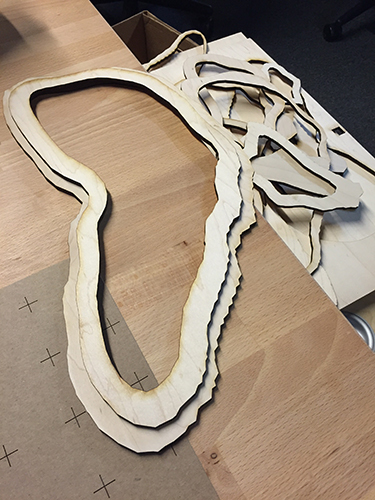

Then I packed everything up and took it to my friend’s house to use the giant woodworking shop in his basement. We used a handy little silicone brush to line the bottoms of each layer with some Titebond III wood glue and kinda guesstimated where they would go. We took some liberties and made a couple steeper sections in the island.
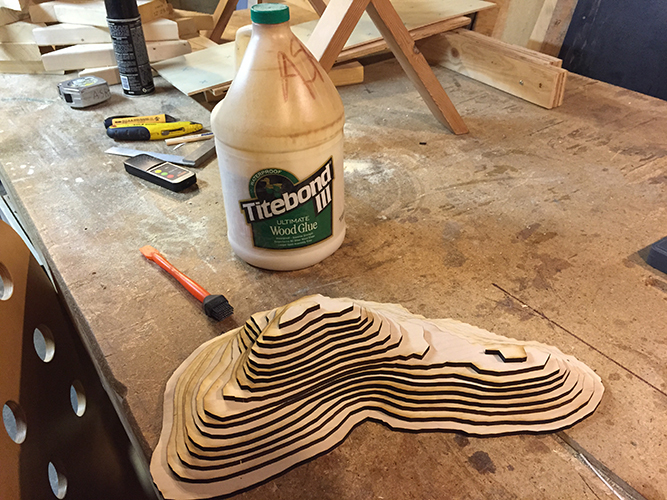

When all was said and done, we balanced some heavy things on the model and left it to dry overnight. The end result is quite sturdy.
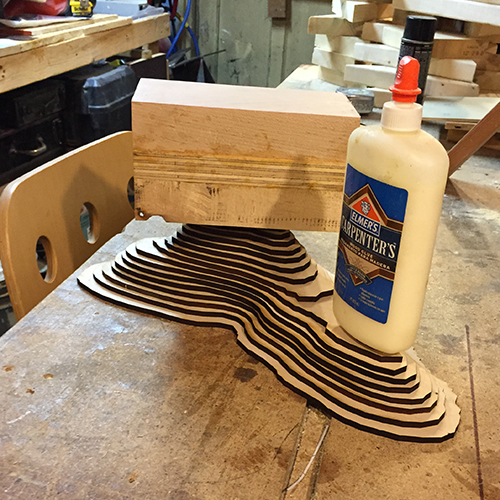
Lessons learned: Next time, it would be a good idea to add a slight engrave of the next layer on the layer below. This would make it much easier to see where to place each piece. Also, a label would have been nice on that empty section, but I couldn’t decide on a font. If there were rivers or roads on the island, it would have been neat to engrave those as well.
